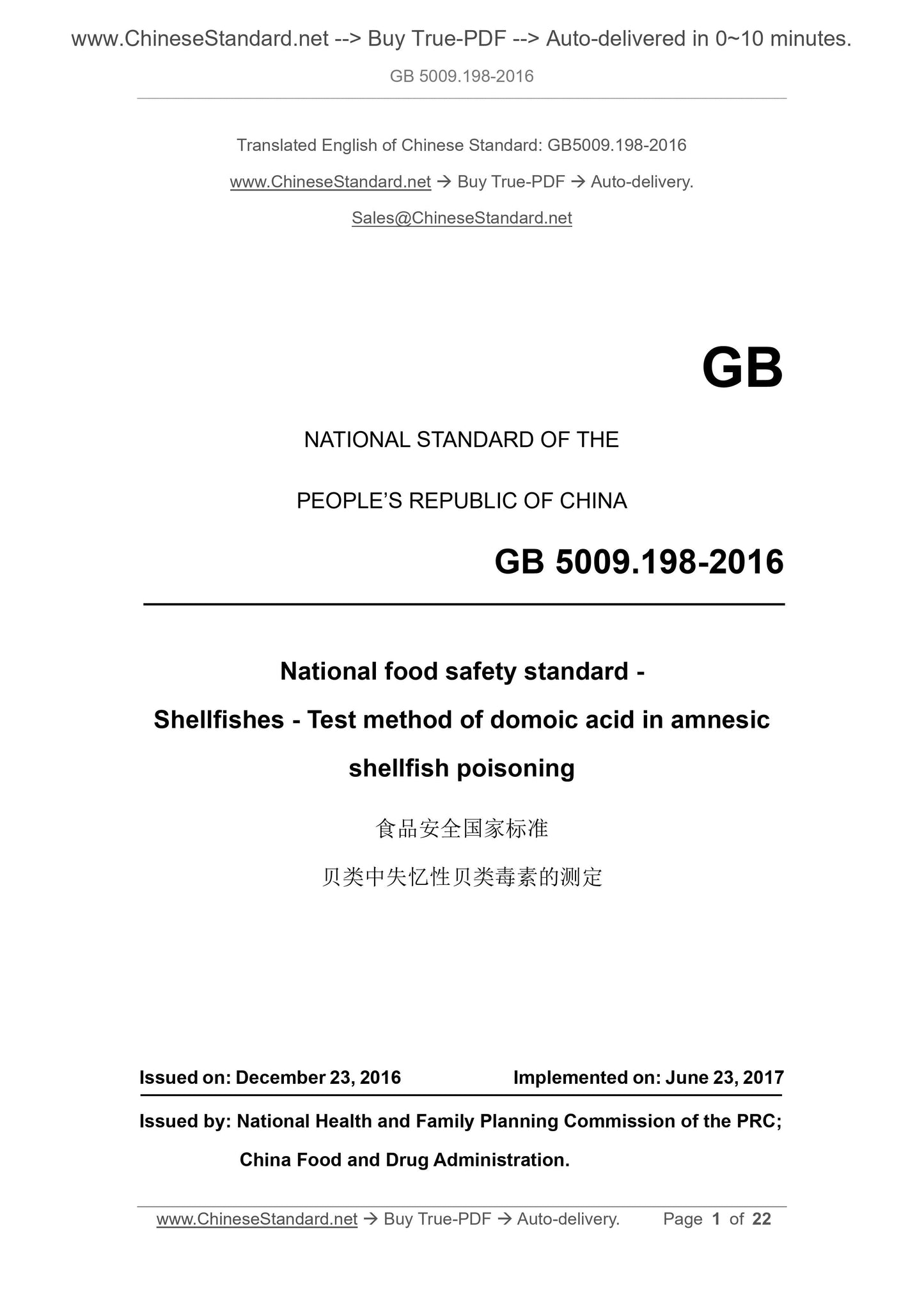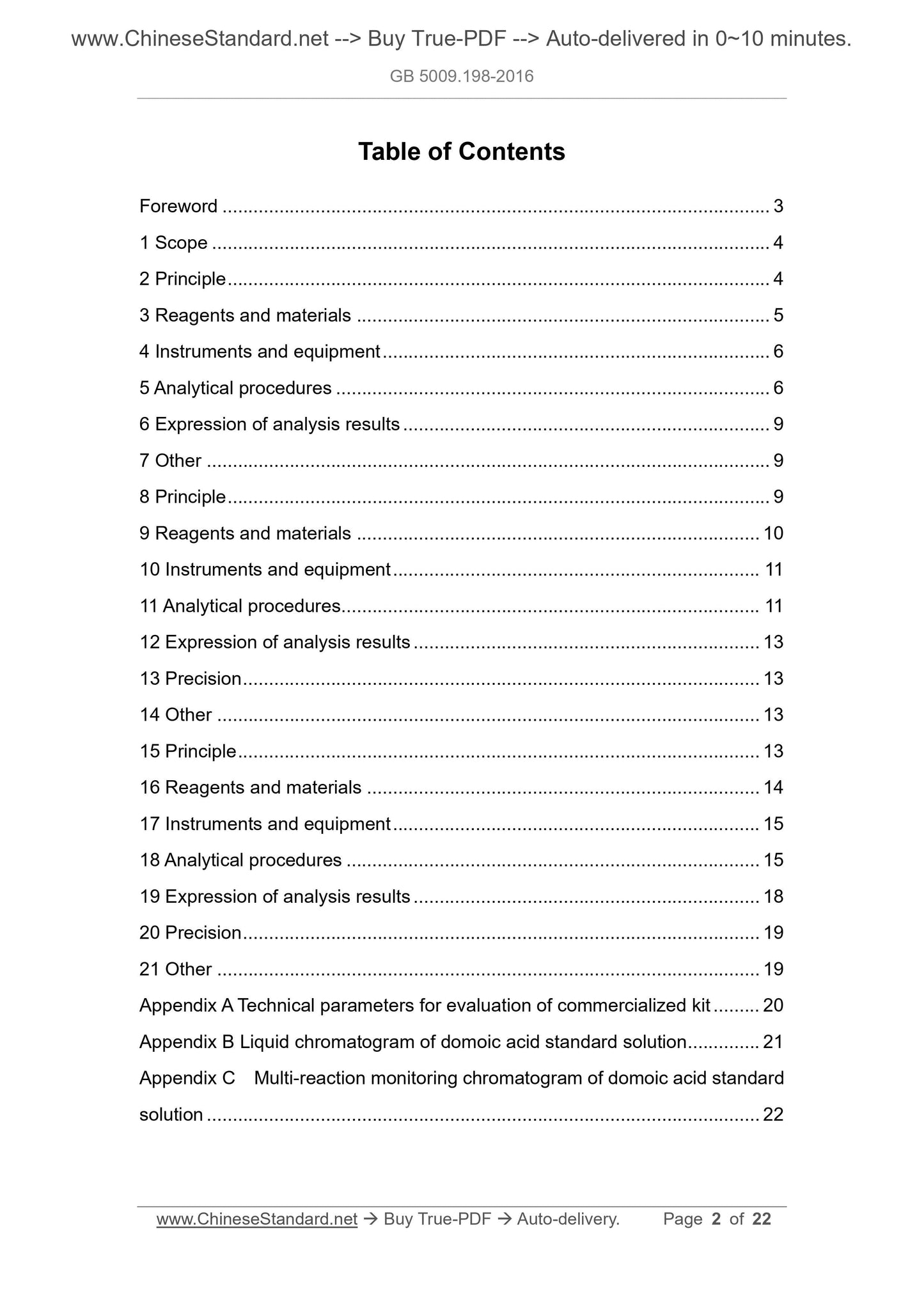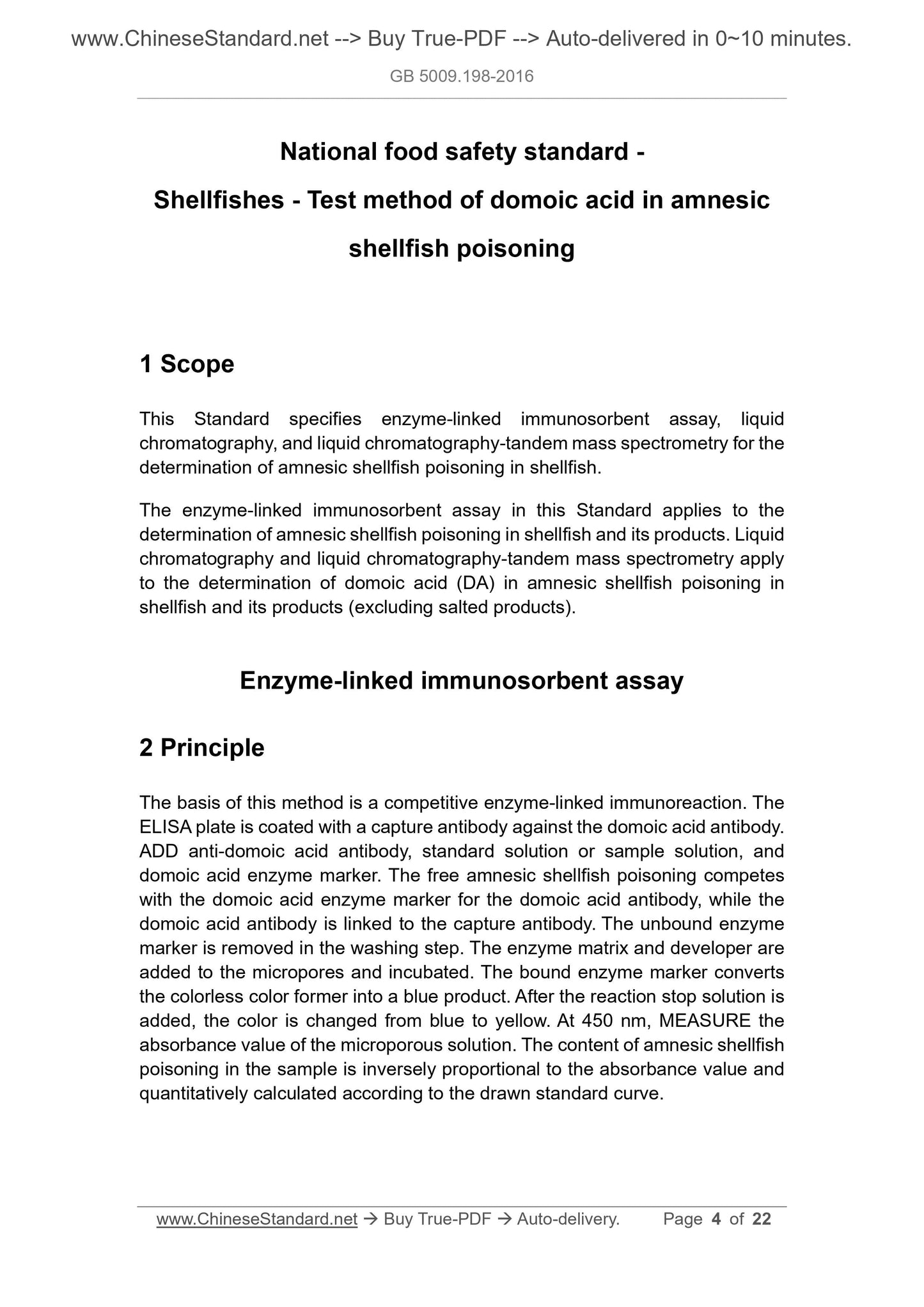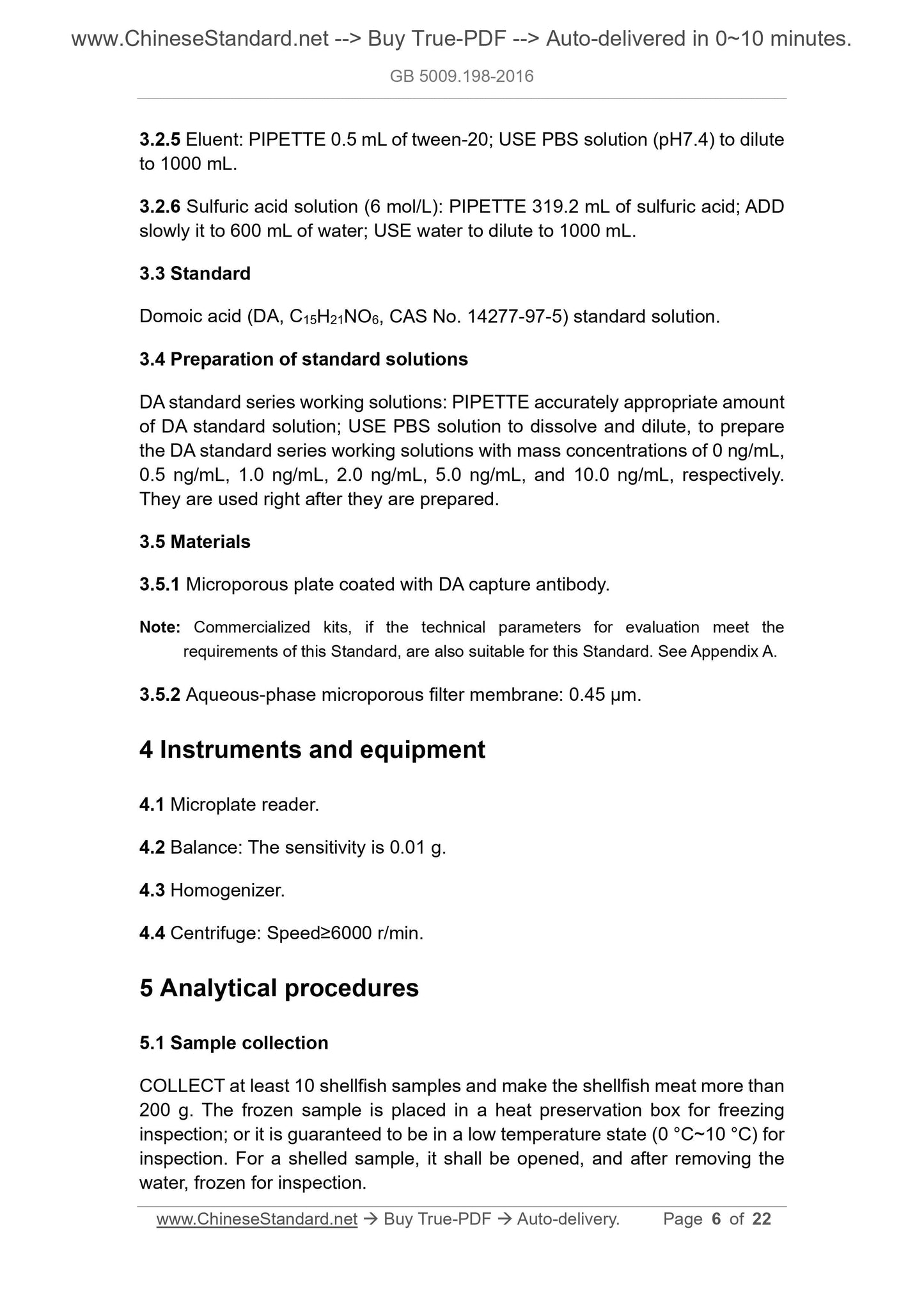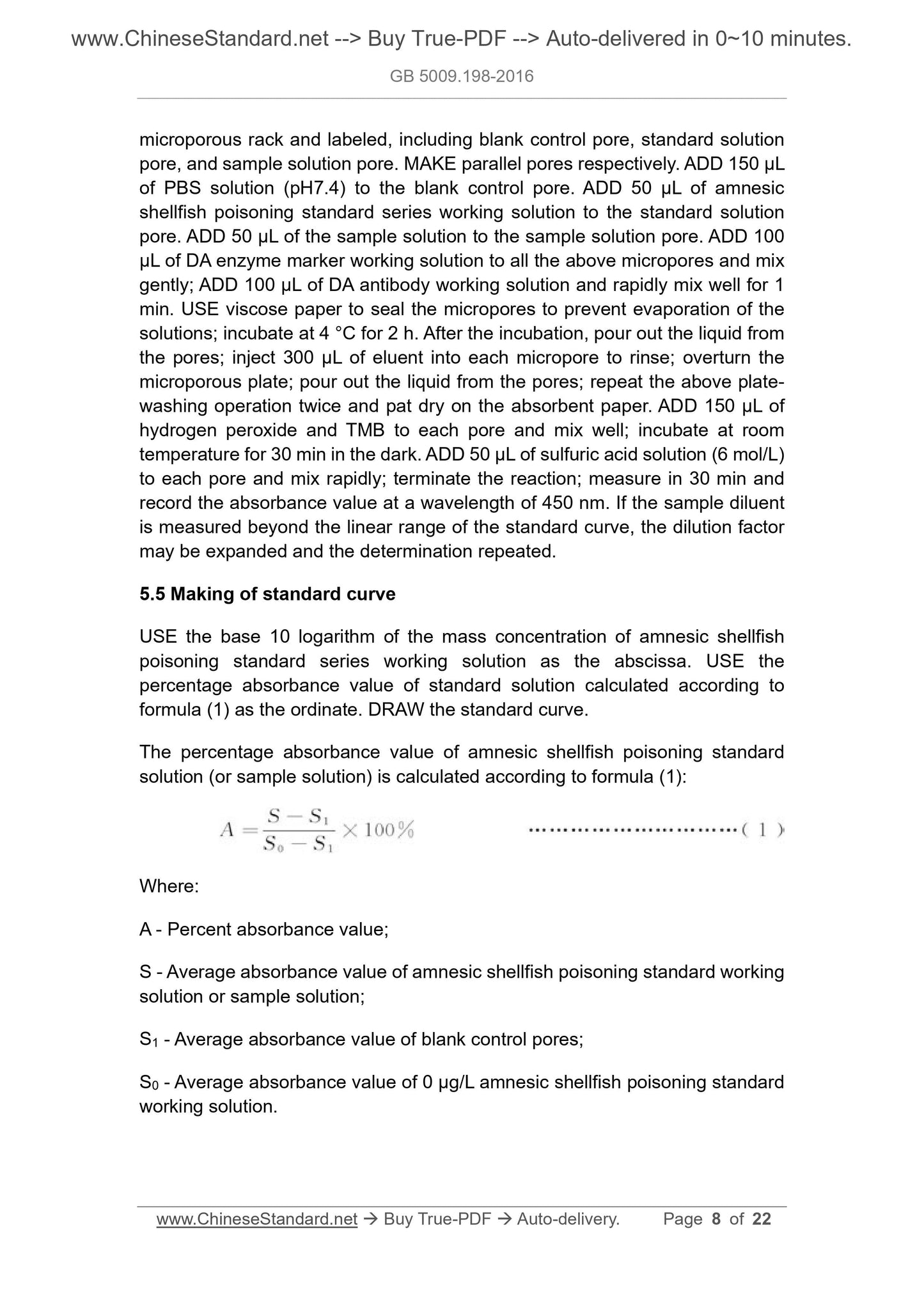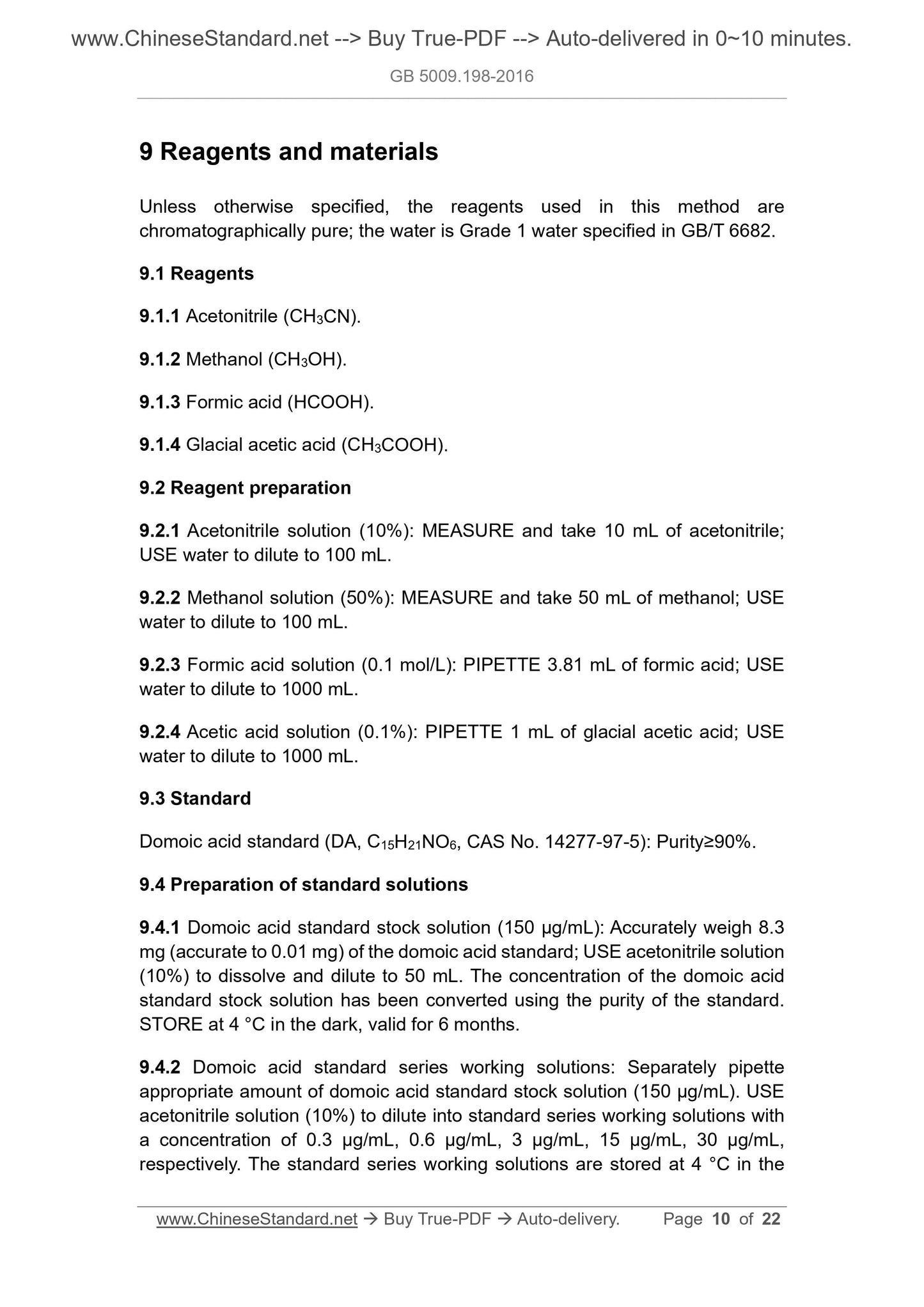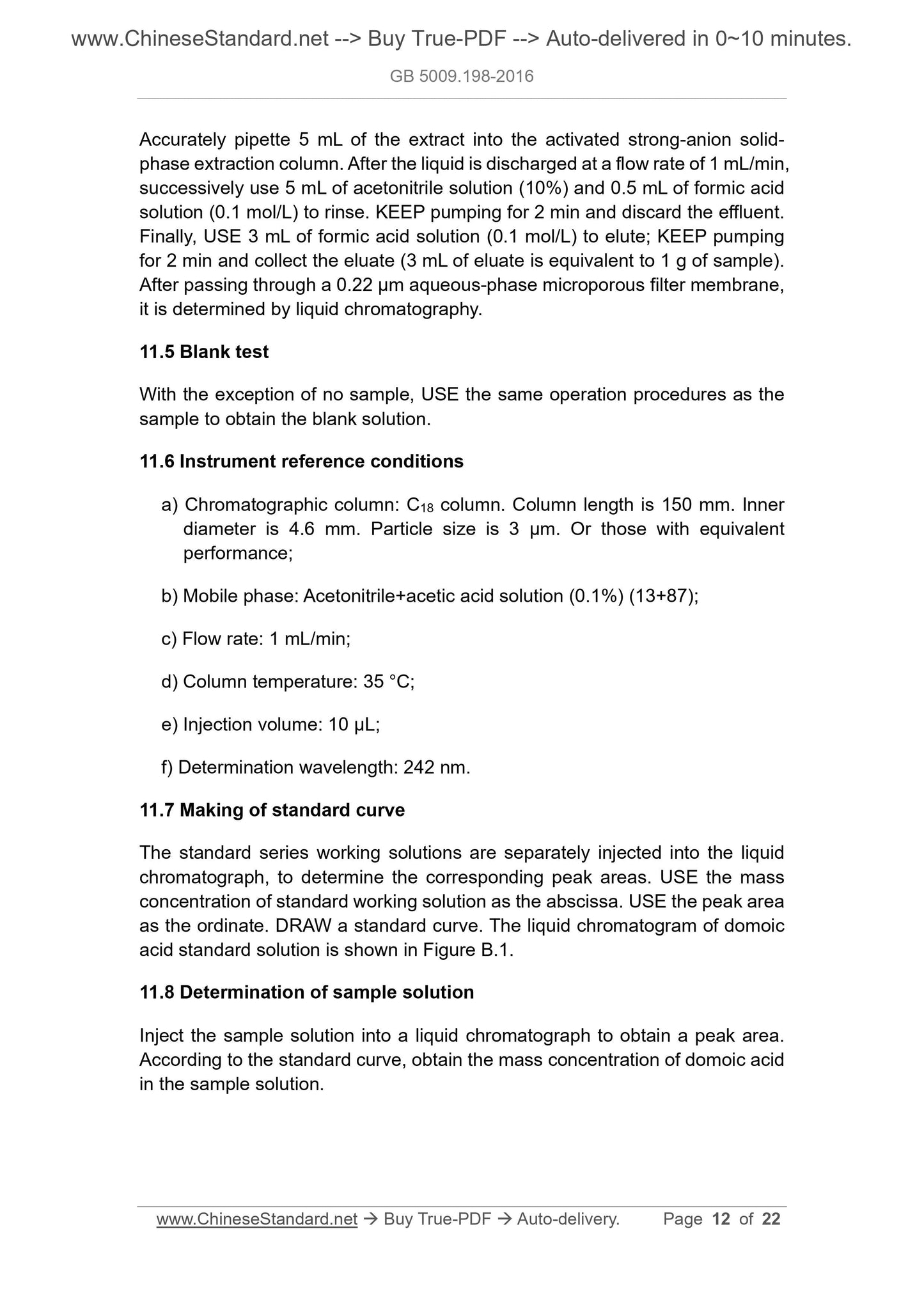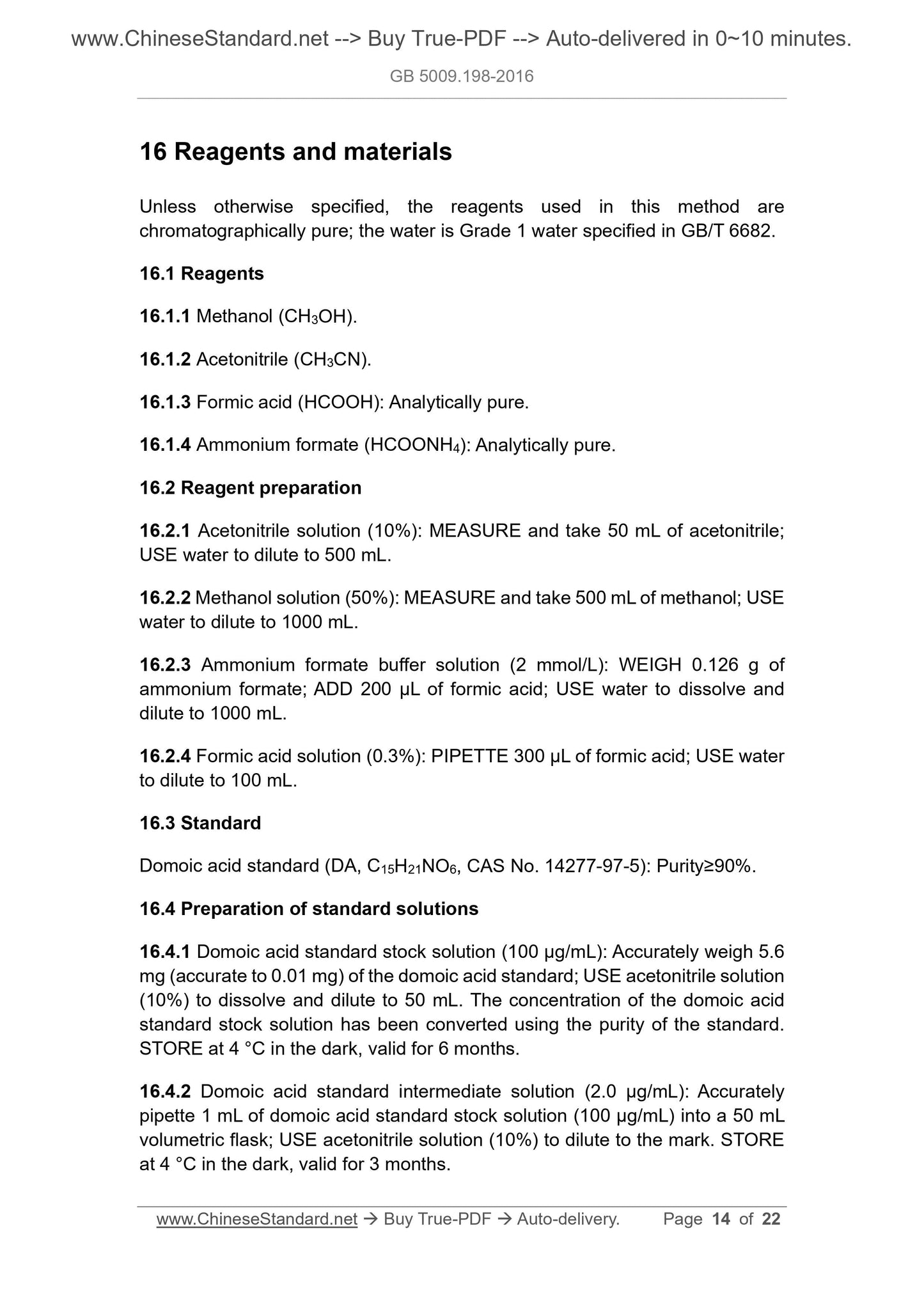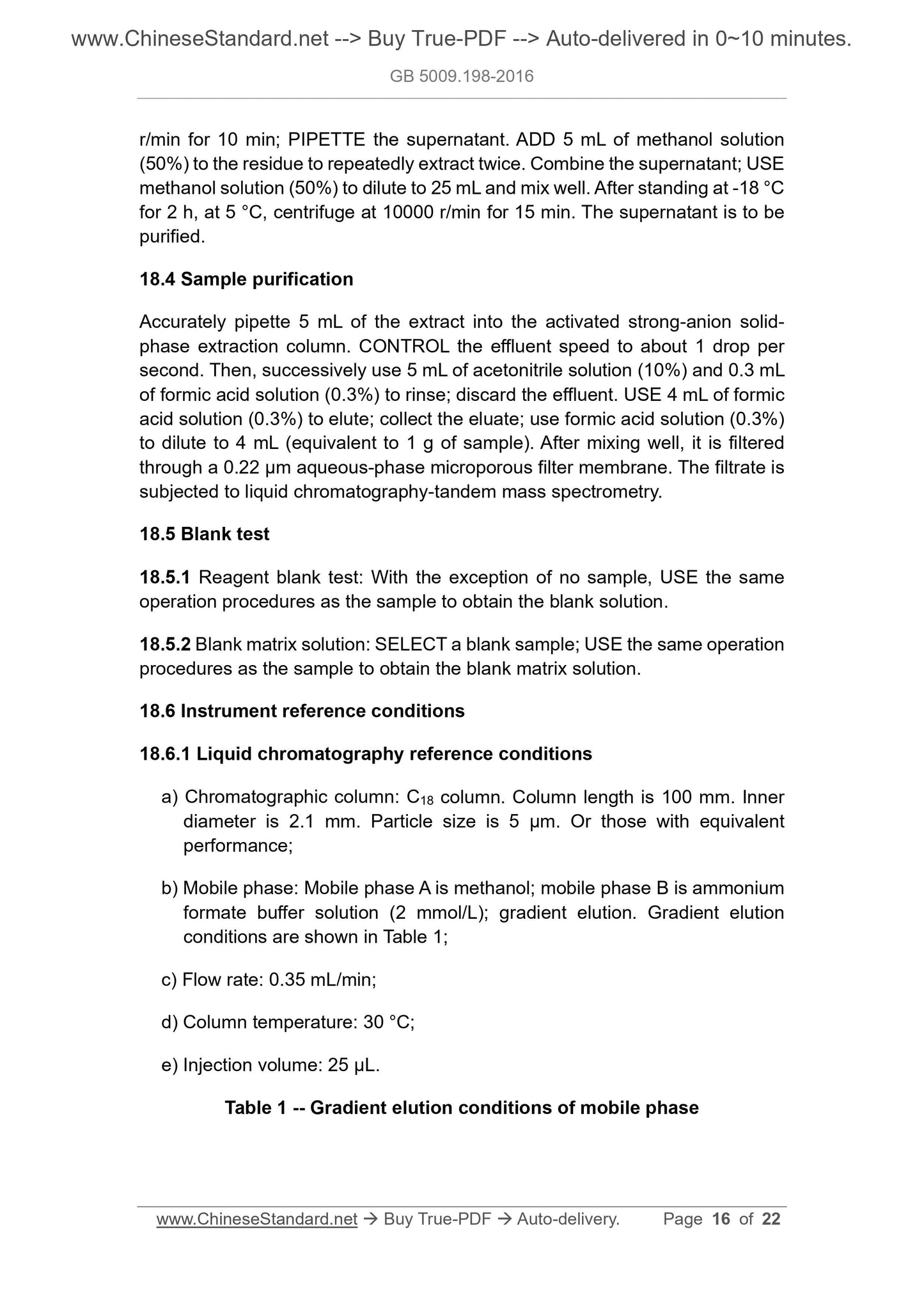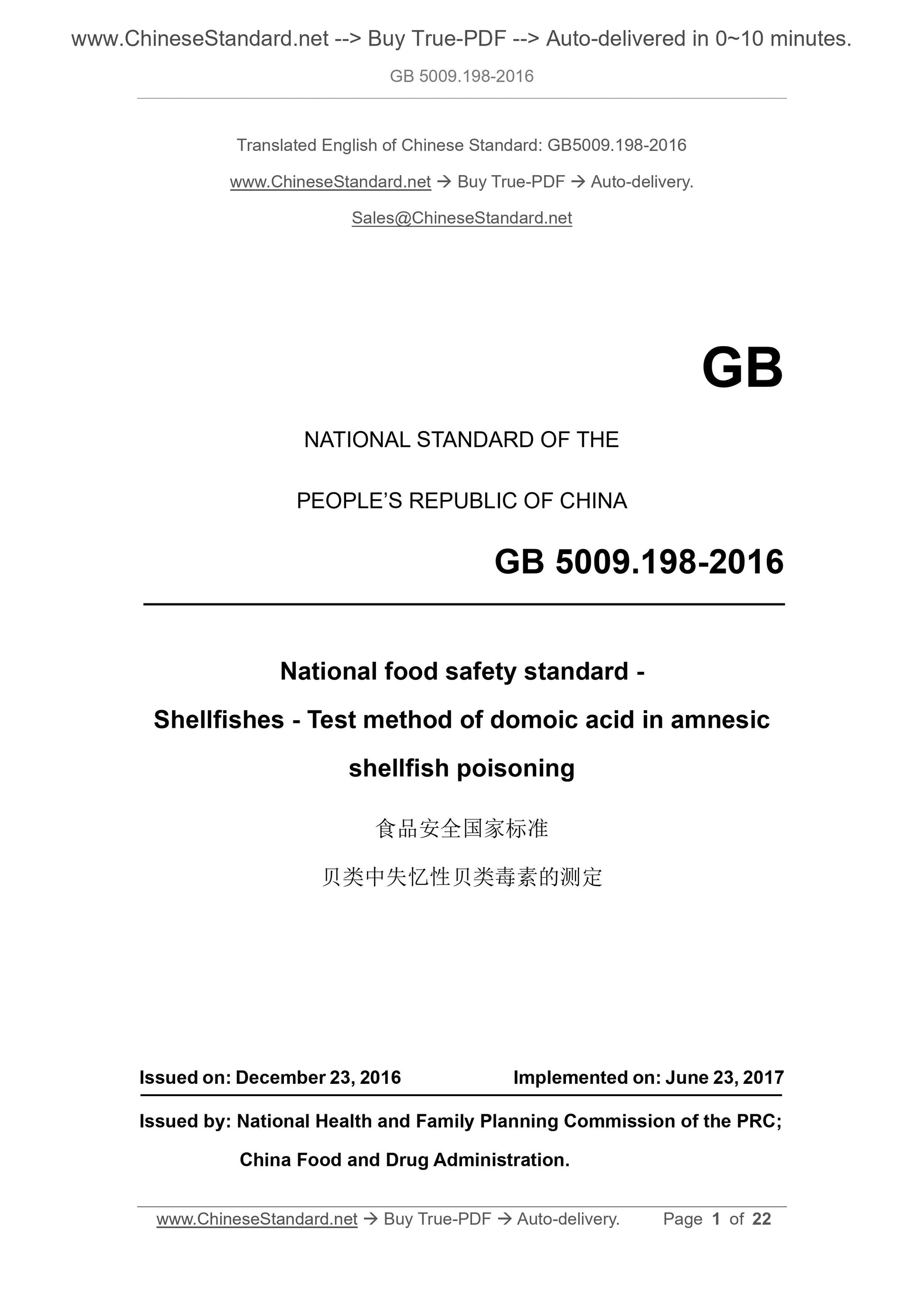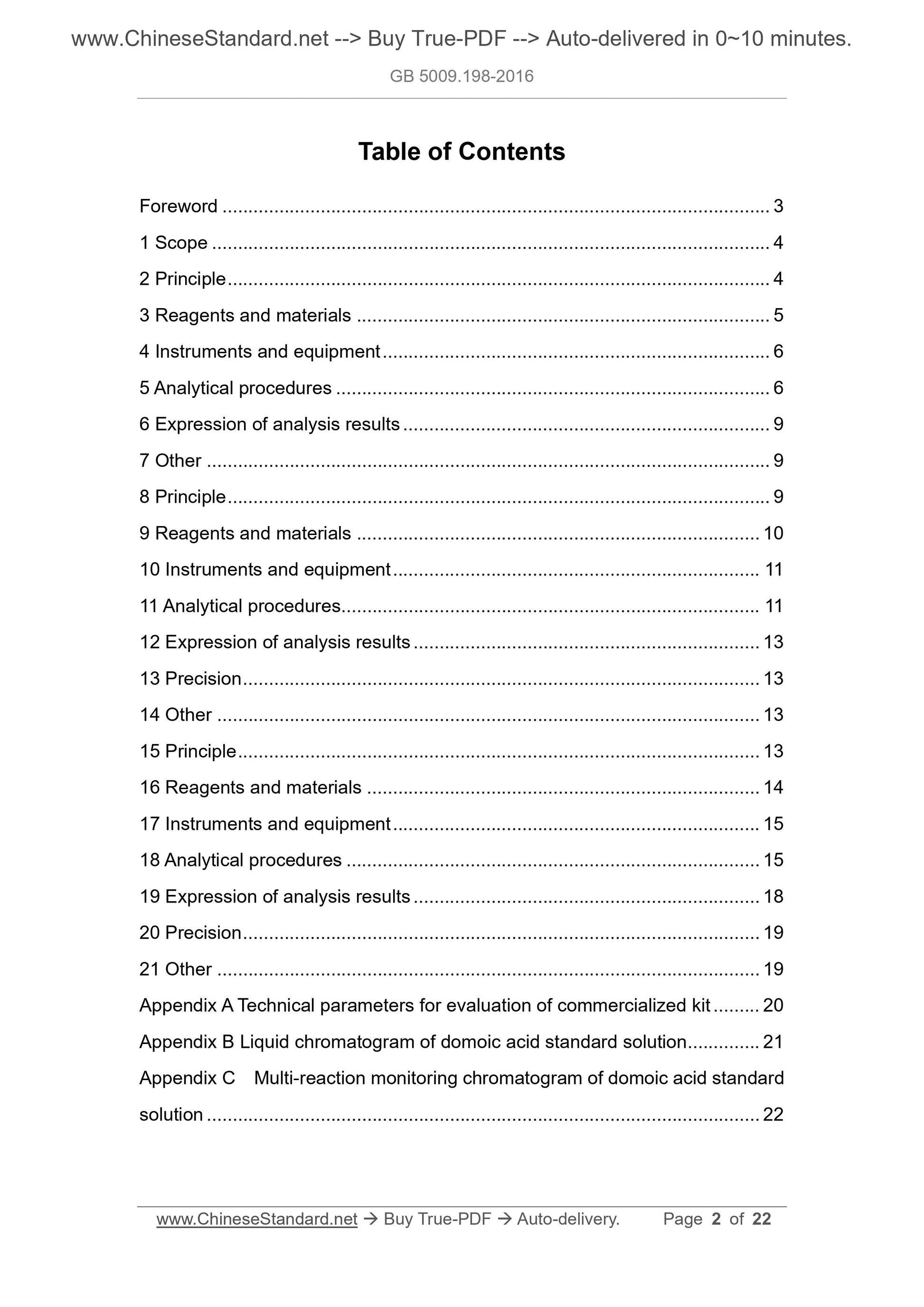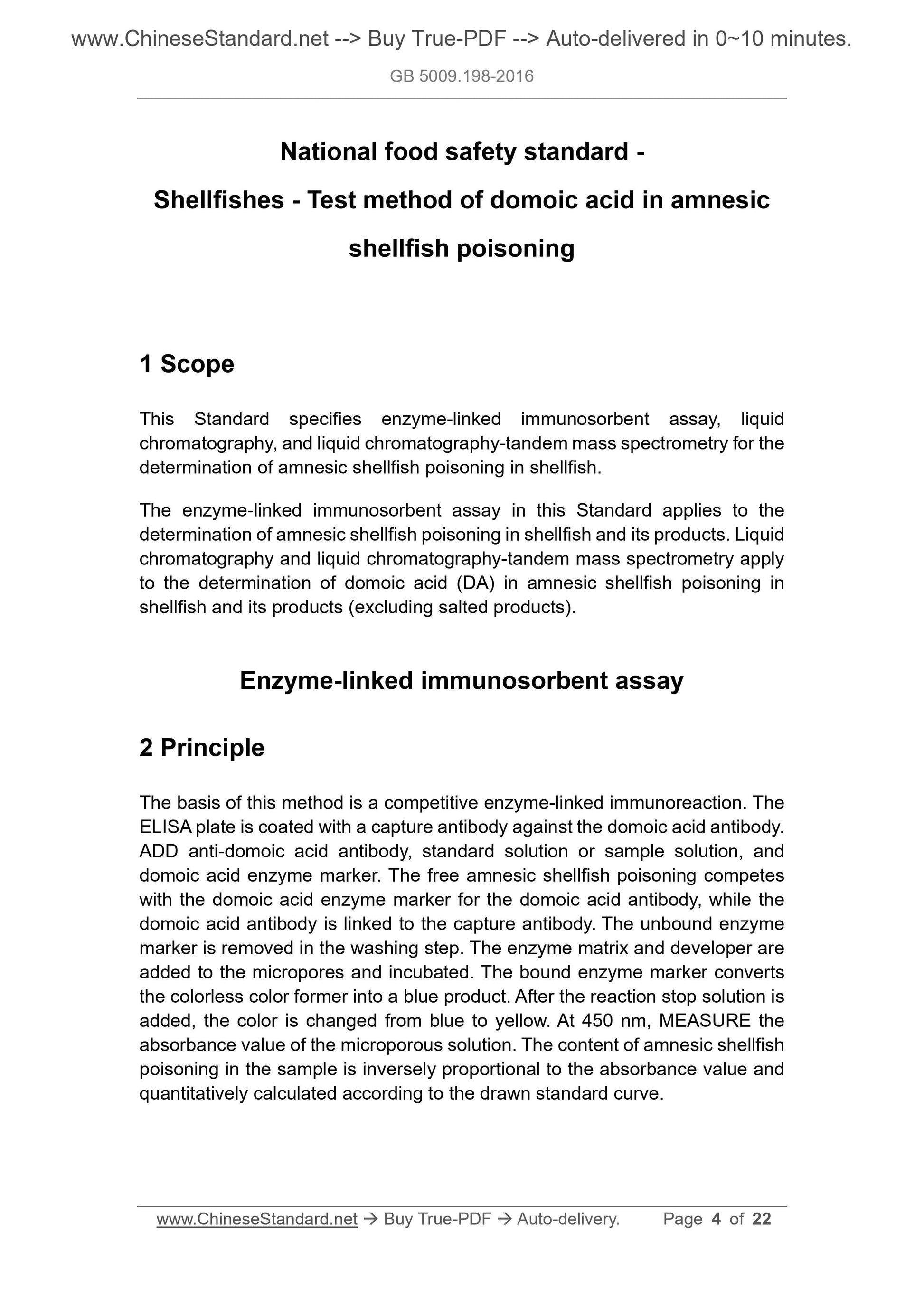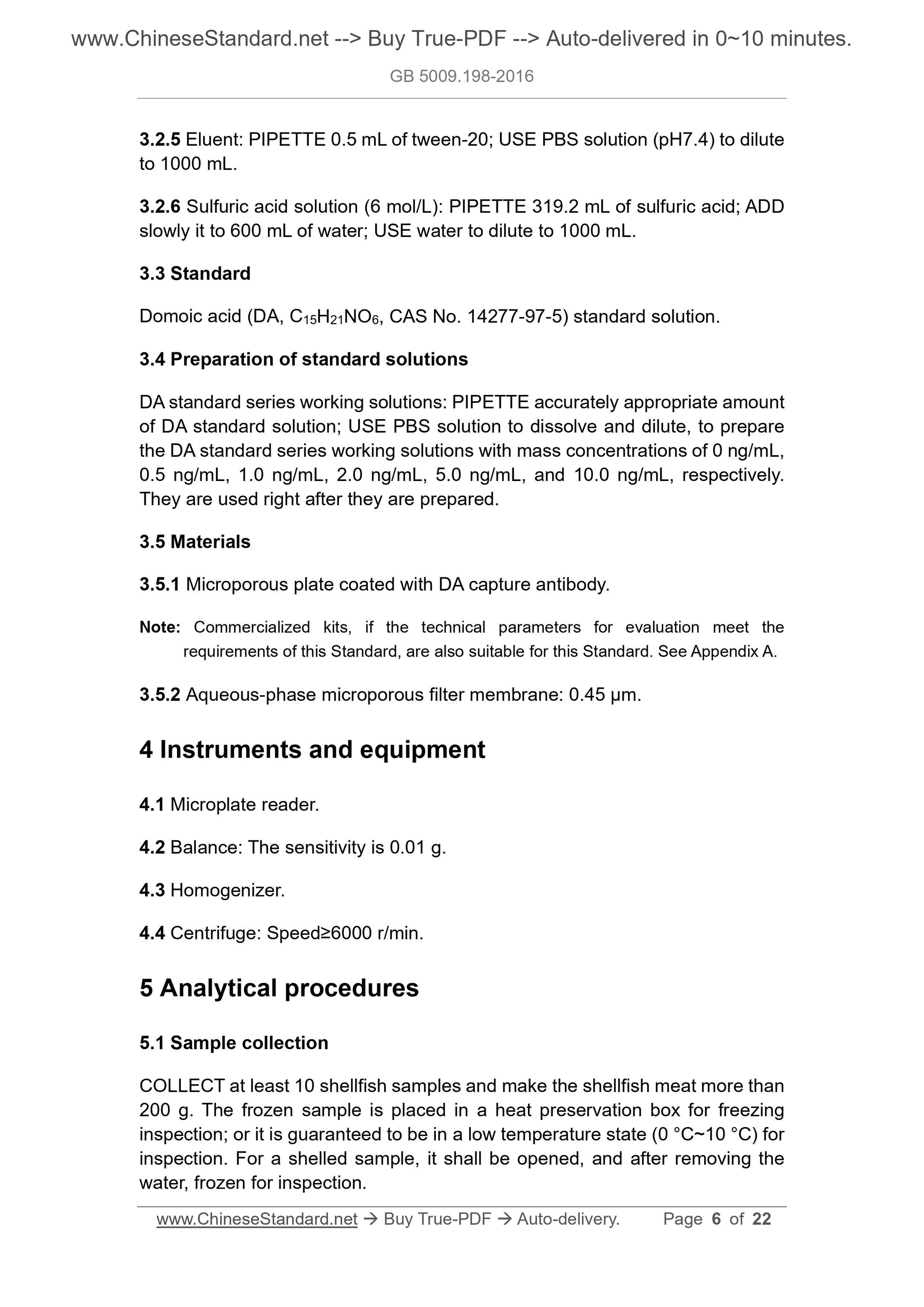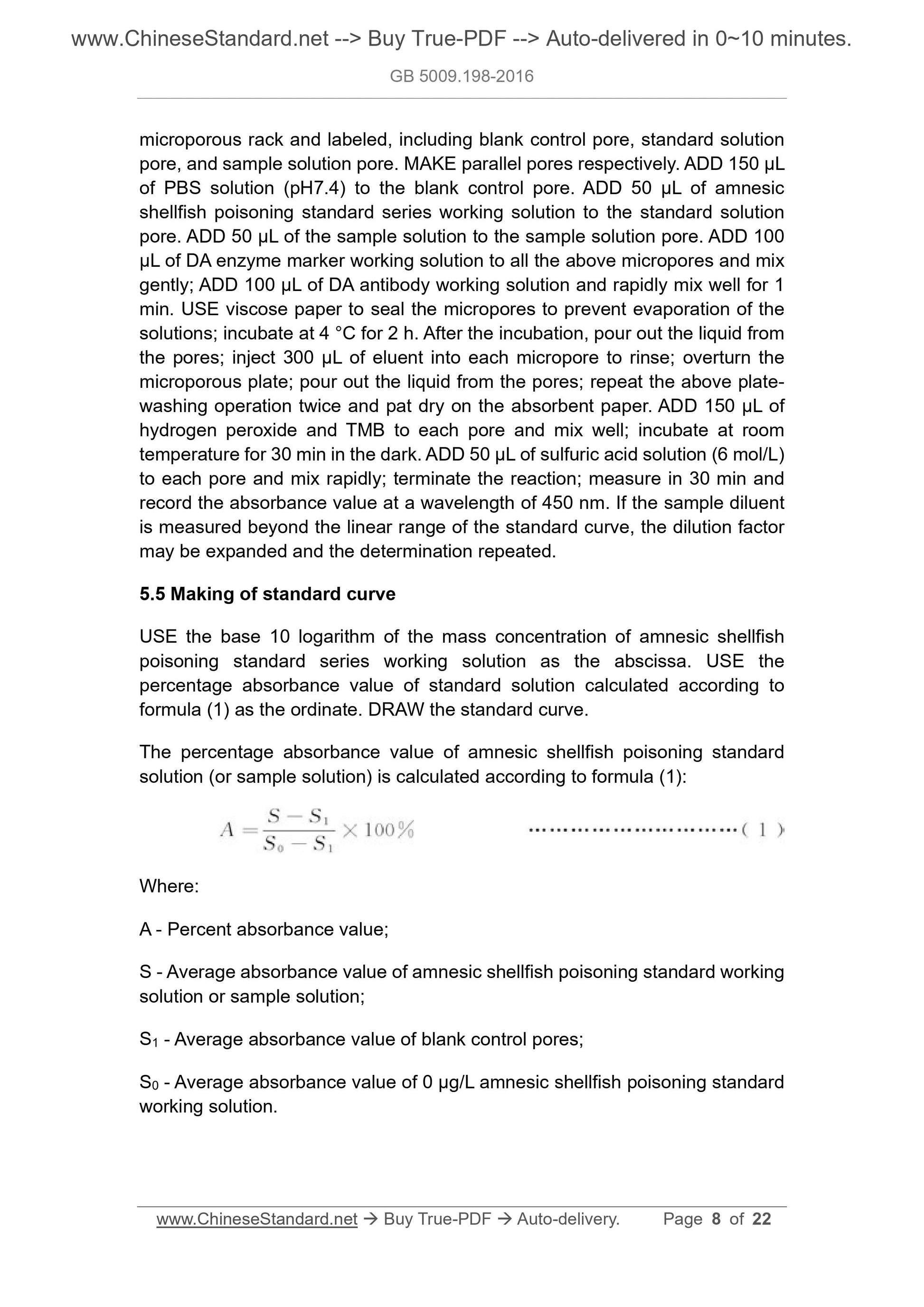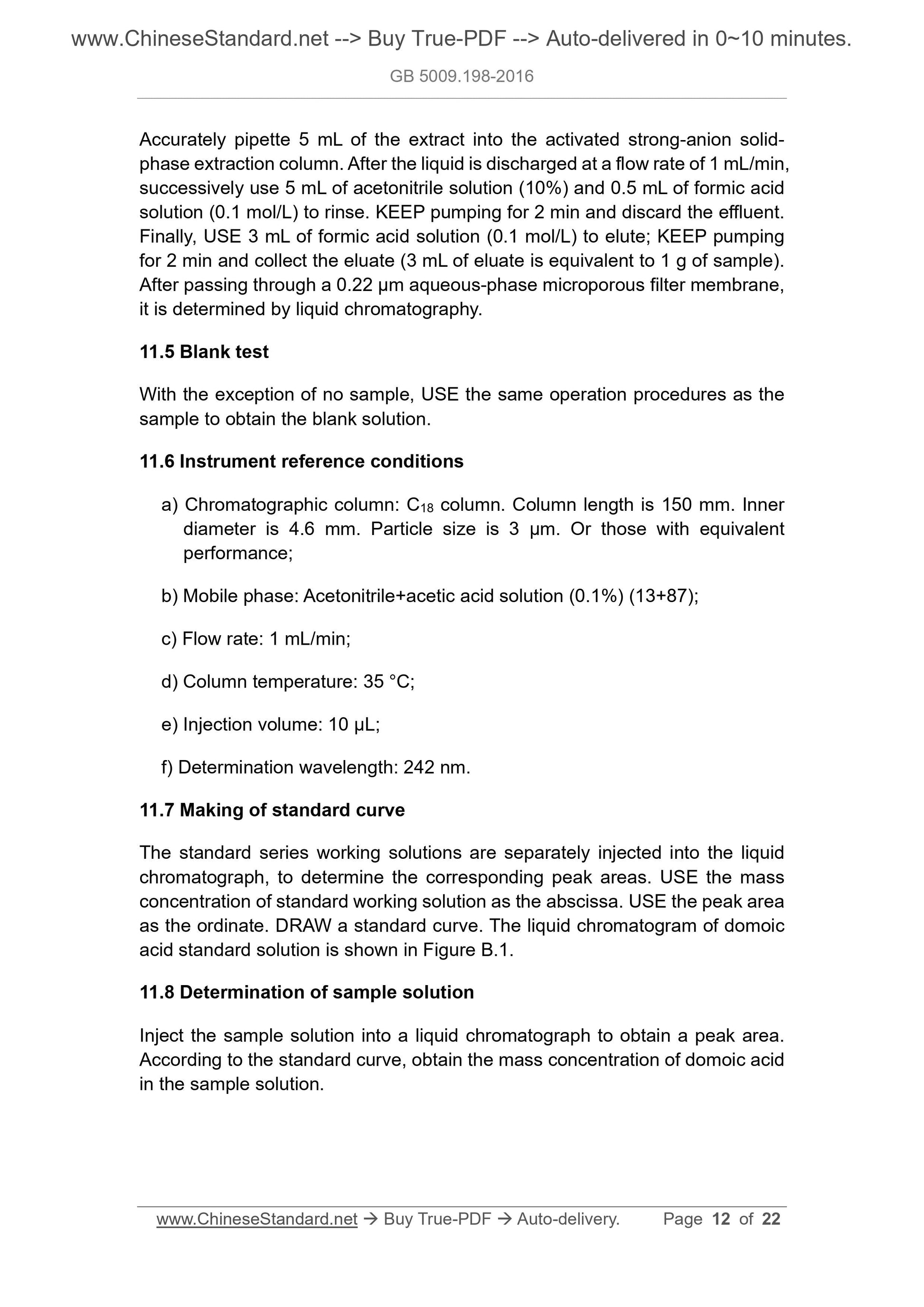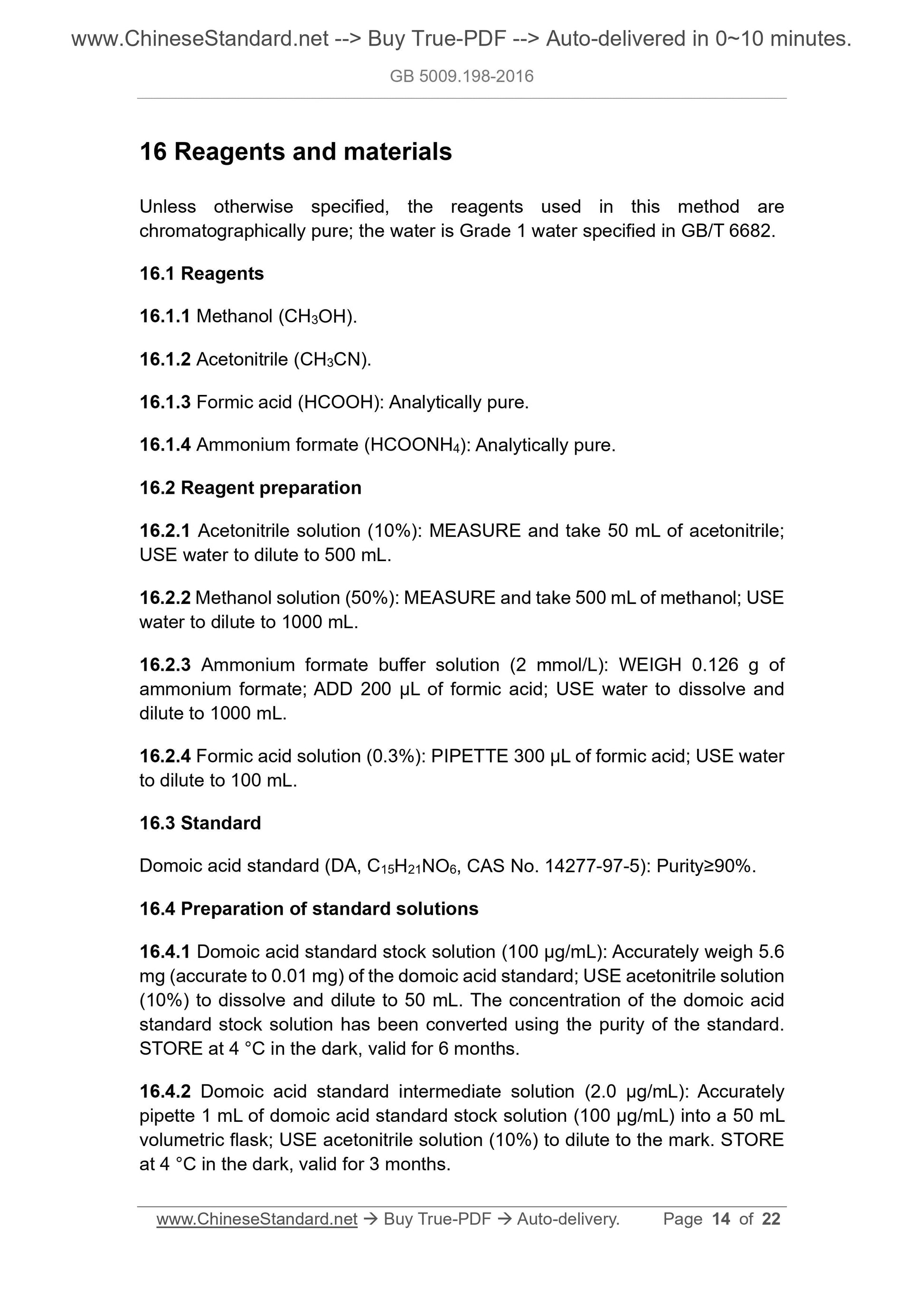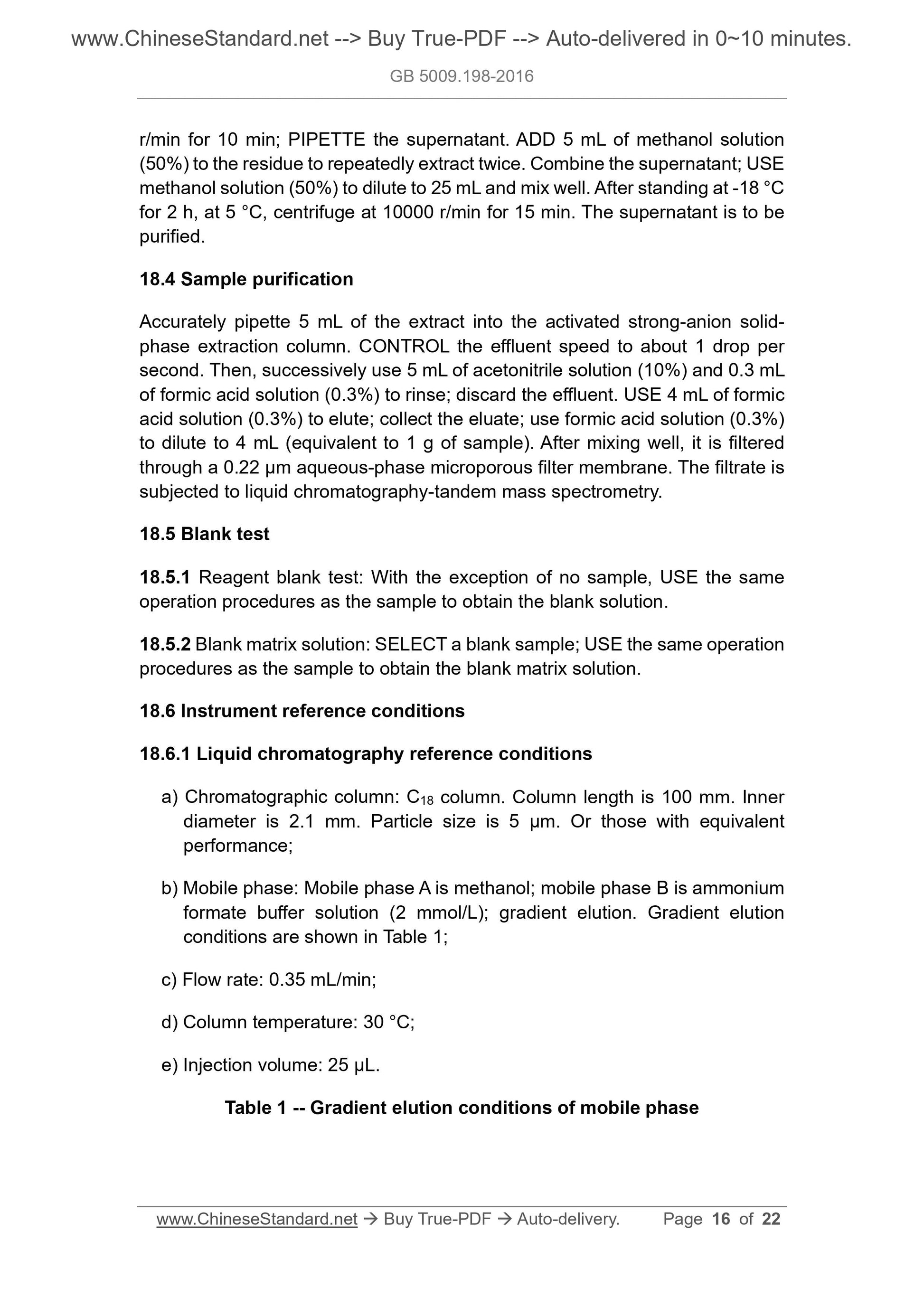1
/
of
9
www.ChineseStandard.us -- Field Test Asia Pte. Ltd.
GB 5009.198-2016 English PDF
GB 5009.198-2016 English PDF
Regular price
$250.00
Regular price
Sale price
$250.00
Unit price
/
per
Shipping calculated at checkout.
Couldn't load pickup availability
GB 5009.198-2016: National food safety standard - Shellfishes - Test method of domoic acid in amnesic shellfish poisoning
Delivery: 9 seconds. Download (and Email) true-PDF + Invoice.Get Quotation: Click GB 5009.198-2016 (Self-service in 1-minute)
Newer / historical versions: GB 5009.198-2016
Preview True-PDF
Scope
This Standard specifies enzyme-linked immunosorbent assay, liquidchromatography, and liquid chromatography-tandem mass spectrometry for the
determination of amnesic shellfish poisoning in shellfish.
The enzyme-linked immunosorbent assay in this Standard applies to the
determination of amnesic shellfish poisoning in shellfish and its products. Liquid
chromatography and liquid chromatography-tandem mass spectrometry apply
to the determination of domoic acid (DA) in amnesic shellfish poisoning in
shellfish and its products (excluding salted products).
Enzyme-linked immunosorbent assay
Basic Data
| Standard ID | GB 5009.198-2016 (GB5009.198-2016) |
| Description (Translated English) | National food safety standard - Shellfishes - Test method of domoic acid in amnesic shellfish poisoning |
| Sector / Industry | National Standard |
| Classification of Chinese Standard | C53 |
| Word Count Estimation | 15,158 |
| Date of Issue | 2016-12-23 |
| Date of Implementation | 2017-06-23 |
| Older Standard (superseded by this standard) | GB/T 5009.198-2003; SN/T 1070-2002; SN/T 1867-2007; SN/T 2663-2010 |
| Regulation (derived from) | National Health and Family Planning Commission Notice No.17 of 2016 |
| Issuing agency(ies) | National Health and Family Planning Commission of the People's Republic of China, State Food and Drug Administration |
Share
